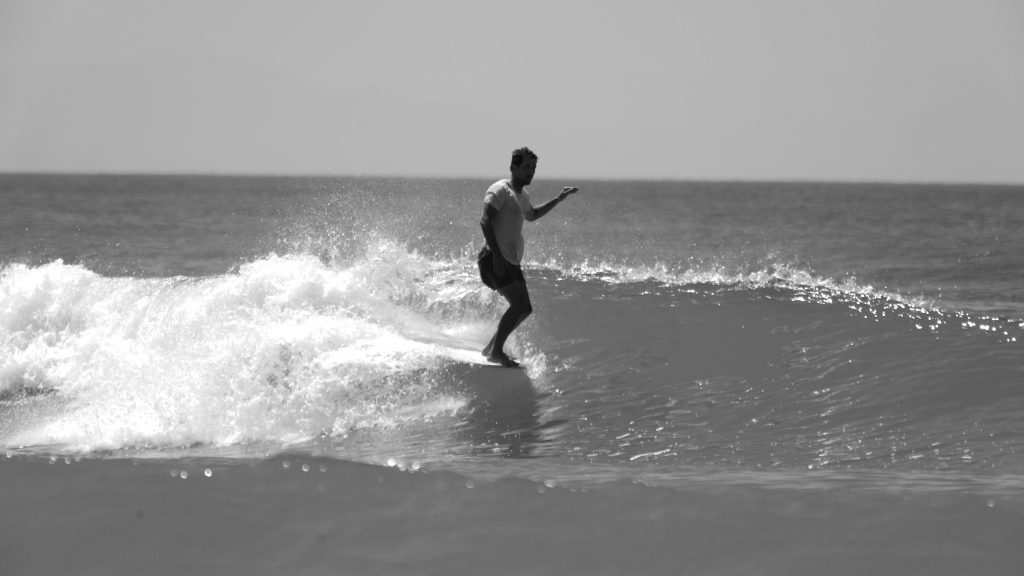How to choose the correct longboard fin

Whenever we develop a new product, we like to have the opinion of our riders in order to base ourselves on the best feedback possible. That is why we are going to start a section in which they themselves explain everything concerning the Deflow product range.
This time, we asked Clovis Donizetti a couple of questions about single fins and longboard fins. We hope this Single Fin Guide helps you choose your next quiver addition ?

Hello Clovis! First of all, thank you for letting us some minutes to answer some questions about single fins and longboard fins. Let’s start with a very simple but key question: How important is it to ride the right template?
Clovis: Of course depending on your skills ( a good surfer can ride anything, but will be more sensitive to details) you might find it important to have the right fin on the right board.
It can change drastically the mood of your board, and its behaviour in different types of waves.
There’s some basics to fins, but as with everything else in surfing, the most important is that it feels good to you.
In terms of longboarding, how do you choose your fin?
C: We got the chance to have a wide array of fins nowadays. Especially regarding Dolphin style fins.
I’d say first, analyze what you’d ultimately like to do on a longboard. Noseriding, maybe turning or both, or just going fast through sections all the way to the beach?
Next, size can be crucial, depending on your weight and if your regular waves are soft and clean, or a powerful beach break, for example, you might want to go smaller or bigger.
Best fin for noseriding? for turning? and best mix?
C: For noseriding, I am especially fond of the fins made in 65/66 at the height of longboard. they were pivot style fins but very lively too.
Turning, you can go towards more Australian fins influenced by Greenough and his different stages in the late 60’s.
Flex is key for the kickback, but sometimes a stiff fin in solid waves is interesting as well.
The best mix is without hesitation a combination of wide base and refined tip with a bit of flex throughout the fin. You could travel the world with just a few of these fins in different sizes and any board you’d be surfing would instantly be better.

Key aspects to take into account when buying a longboard fin.
C: Is your fin correctly finished? Was it made by a company that knows about fins? or just a cool design that doesn’t mean anything? Is it the right size for your board?
and eventually, don’t follow the trends, is it looking good for you?
We also asked our community via social media, here you have some interesting questions:
What kind of fin for a traditional shortboard single fin?
C: I’d go for a 70’s template style, anything upright in the 7’5 in. for real waves.
If it’s a softer style of the board (egg, midlength) in the 9 in. with a bit of flex and a refined template.
Why do most fins have sharp leading edges?
C: I don’t have an answer for this, but most fins erode with time and dragging on the sand, eventually refining the tip ( especially on volan fins).
The general foil of the fin is way more important than these edges anyway.
Which fin is the best for longboard?
C: The one that suits you the best ! In my opinion, having a few fins and being able to try more pivot, then more refined fins is like cooking the same dish and mixing up with different
ingredients each time. Once your board is glassed, the fin will be the only element you can actually adjust.

2 +1 when and where?
C: On a longboard, never.
On a midlength or shortboard, if you’d like to rely on a side bite in order to go more vertical.
I like to ride performance but look for a more classic feeling. Which fin should I choose?
C: Something not too big like 9’75 and with a fuller template than the dolphin fin style. From there you could decide on, more pivot style? more refined?
I ride a 10’1 eagle glider, haven’t found the correct fin, any ideas?
C: You can go Skip Frye style and put a 6’5 or 7’5 in the upright template. The bigger the board, the less the fin is a rule of thumb, as you tend to use the rails more, the fin being only here for take-off and as a stabilizer.
If you’d wish to turn more, 9 inches can allow you that. anything bigger and your glider will go slow in my opinion.
Thanks a lot, Clovis! Anything more to add?
C: Here are some Deflow fins in connection with what I discussed above
Modele Rouge: for a starting approach to classic longboarding, and a good simple fin to use.
Modele Cream, SaltWater or Margaux : The fin that everyone should have in his quiver. turning trimming or holding noserides in the pocket. this is the one.
Modele DnD: For refined surfers, understanding a more subtle approach to surfing
note: you could use the cream model in a shorter size, mini cream, for gliders, single fins shortboard, etc, this template is like a good pair of 501, it works!
shop our collection of longboard fins






